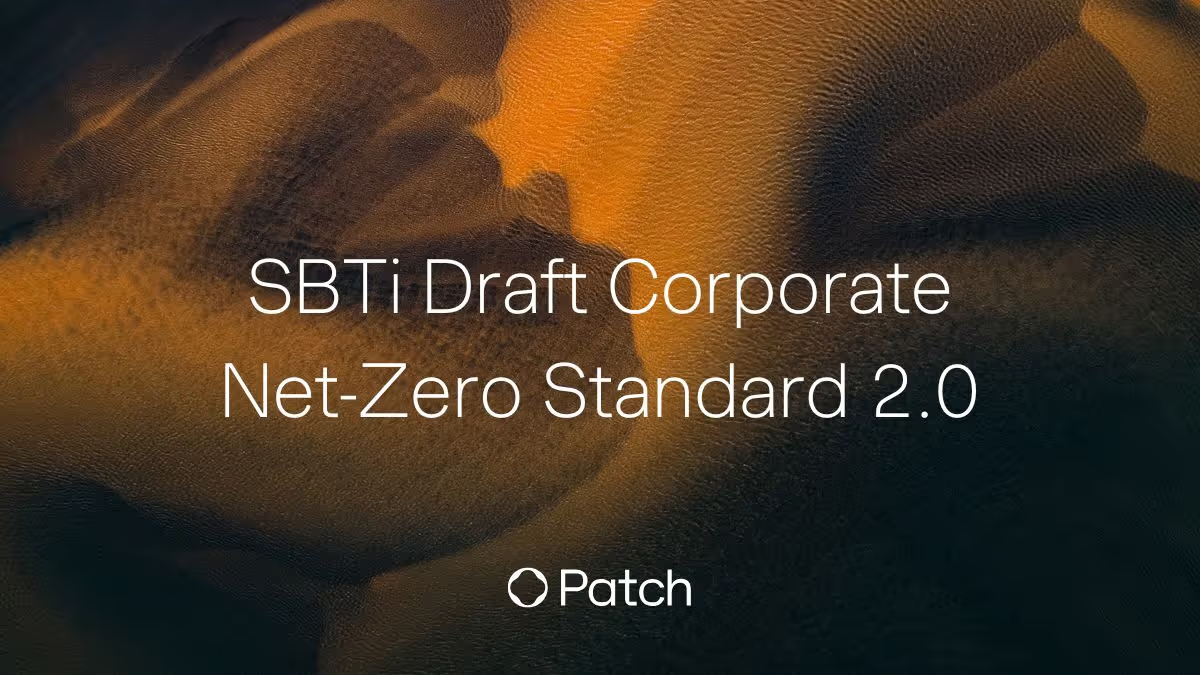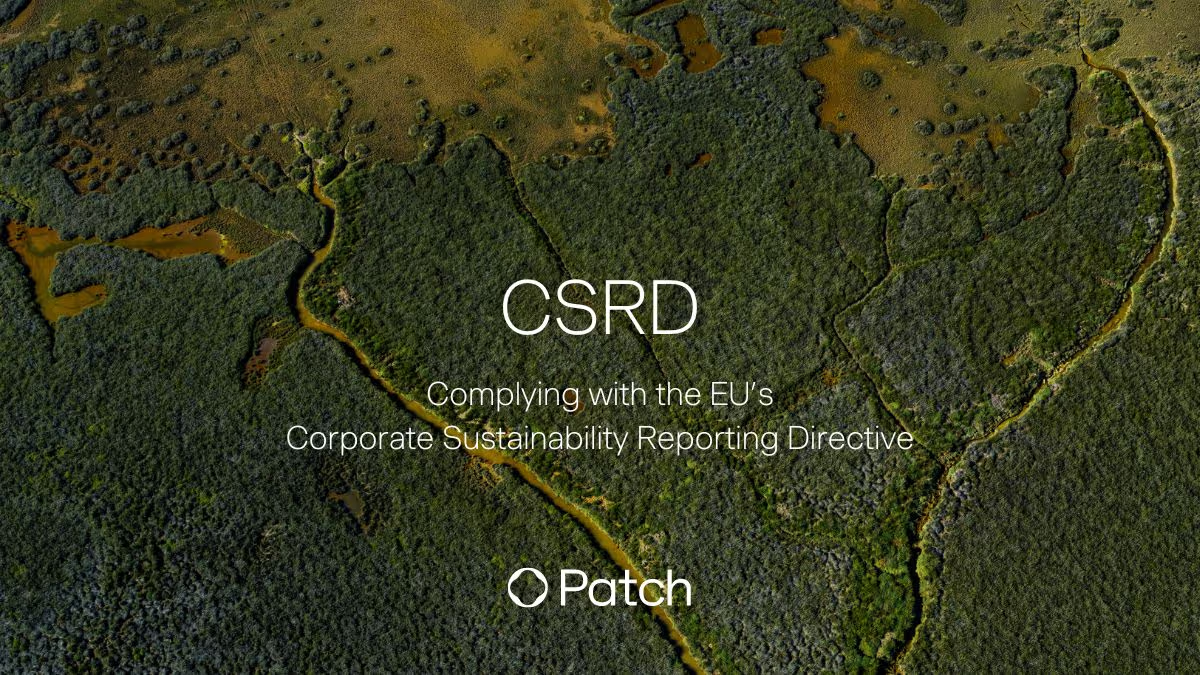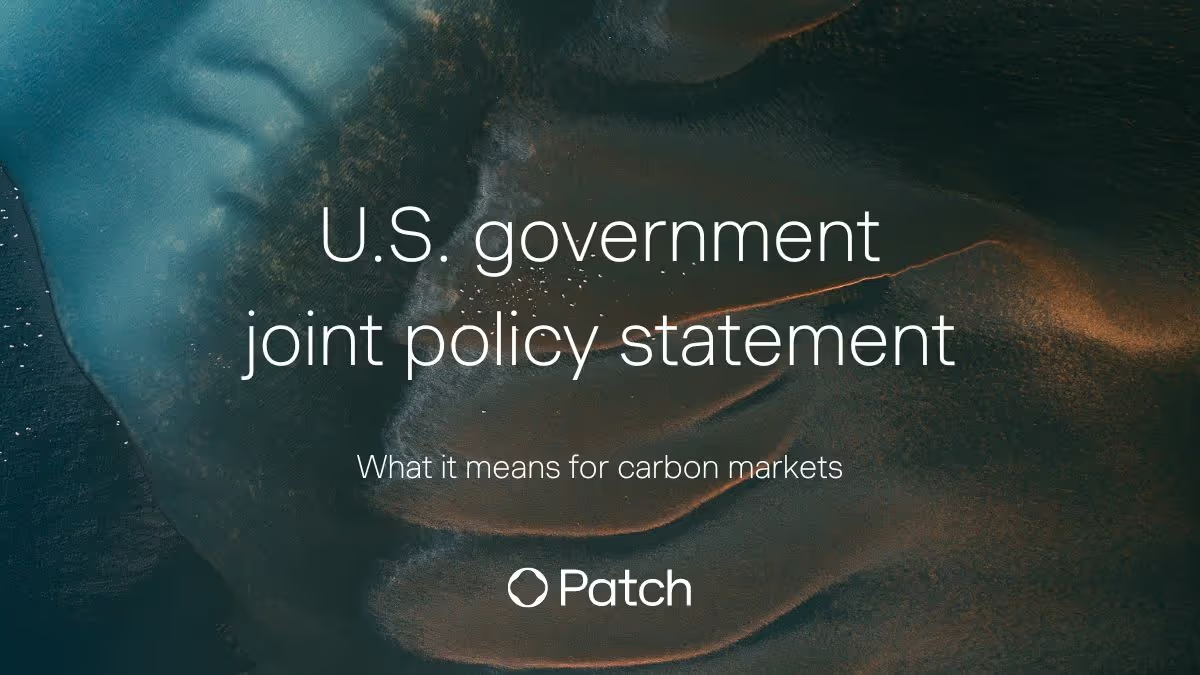The Patch team attended Climate Week NYC this year with one goal in mind: help shape the carbon market of the future. For those of us in the city this meant meeting with as many stakeholders in the space as possible to hear their concerns, their hurdles, their ideas, and their goals for what the voluntary carbon market can become — then taking that knowledge back to our team to ensure our products and strategies are helping to deliver on those visions.
A video recap of Climate Week NYC featuring Oliver Forster, VP Sales of Carbon Streaming Corporation and Ariel Hayward, Patch.
Here are four reflections we walked away with after spending a week learning from our partners, customers, and ecosystem players across the industry:
1. Climate tech and startups rising to the occasion
For those that have recently joined the climate space, it might be a surprise to find out that Climate Week NYC actually began as a side event of the UN General Assembly meetings. Over the last decade as the climate community has grown, so too has the presence of Climate Week participants that sit outside of government and political affairs.
The amount of climate tech companies and startup groups who participated in and hosted their own events around Climate Week this year is a hopeful sign that the private sector is stepping up with both investment and innovation.
At Patch, we believe that continuing to expand involvement and create space for new players here is an essential part to solving these complex problems. We need support for novel renewables and CDR (carbon dioxide removal) project ideas that are currently in stealth or even sitting on a bench, we need innovators who are building technology to operationalize these systems throughout our society, and we need capital to fund all of these solutions at scale.

Patch’s Brennan Spellacy speaking at the Climate Capital Summit alongside ClimateTech VC, David Energy, and Senai Technologies.

Patch’s Ariel Hayward speaking at the Carbon Smart Summit alongside Regan Network, Filecoin Green, and Google Cloud.
2. Conviction around CDR’s role in climate action
A stronger conviction around the role of CDR in solving climate change was the biggest shift we’ve seen over the last year. At Climate Week 2022, there was significant chatter around CDR: the IPCC had just released new science-based pathways affirming that removals would need to scale to 10 billion tonnes per year by 2050 to maintain a chance at 1.5°C, and there were questions around whether CDR could play a role in climate action strategies. This year, those questions seem to have been answered — the conversation has moved to how.
Businesses, governments, and the general public alike are largely on board for supporting removal solutions, and were engaging last week to find the best mechanisms to drive investment, participation, and scale. We saw interest in discussing carbon removal support mechanisms from businesses across the board. (This isn’t just the case in the US, Patch released a report last week revealing European support for carbon credits is high among both businesses and consumers.)

Patch convened a group of our project partners working on carbon removal and avoidance solutions for a breakfast to celebrate progress over the last year.
3. Major mobilizing efforts from first movers
With the importance of scaling CDR now established, major investments — both public and private — are starting to take shape.
Last year, the Inflation Reduction Act had just been passed into law in the U.S. This year we got to take stock of the climate benefits coming from these policy incentives. The U.S. government is continuing to set the pace with recent grants of $1B that will go towards direct air capture facilities, the first of which were announced earlier this summer in Texas and Louisiana. The Department of Energy also recently announced an investment of $35M to run a carbon management procurement pilot program, aimed at providing a strong demand signal to CDR project developers to continue to ramp up production and as well as a clear sign to the private sector to amp up their procurement in these areas.
Often these initiatives seem to stand still for far too long, but the pace at which the U.S. government is scaling support for CDR solutions has been incredibly fast even within the span of a year. If the public sector can move this quickly, private capital should be a fast follow.
In New York, the Patch team interacted with companies that are attempting to move at a faster speed and who see CDR as an investment that spans well beyond a one time purchase. Many businesses are now taking steps to implement multi-year offtake agreements to secure future inventory for their businesses and provide early financing to support development of innovative solutions.

Patch’s Lucy Hargreaves speaks about public and private investment incentives with the U.S. Department of Energy’s Noah Deich at the CDR Summit.
4. Concerns around entangling CDR with oil and gas
Major protests against the oil and gas industry were present throughout the week, a topic that is particularly top of mind in the lead up to COP28, which will be held in a region dominated by the industry. The governments of Germany and Colombia joined in urging world leaders to shift away from oil, gas, and coal.
As is often the case in the climate movement, progress usually comes in the form of a few steps forward paired with a few steps back. For the CDR industry, this looks like CDR getting conflated with the end of pipe CCUS mitigation strategies being used by oil and gas companies to lower the intensity of emissions from their manufacturing process.
From our vantage point there are two major causes for this. The first is the simple lack of understanding between two very distinct technologies: CDR, which removes carbon from the atmosphere, and CCUS: an oil and gas-associated mechanism that reduces emissions of carbon into the atmosphere. The second cause is the much more complex dynamic of oil and gas beginning to finance CDR projects, particularly in the direct air capture space, and the potential for this investment to be used to claim net zero and maintain business as usual without meaningfully reducing emissions.
For Patch, solving the first issue is easy, yet incredibly important: we need to do a much better job of educating both our community and the broader public on the distinctions between these two technologies. The second is a much more complicated issue but one the CDR community will likely need to more fully engage in over the coming months and years.
---
Initially intended as an event to spark ambition ahead of the UN Climate Negotiations at the end of each year, Climate Week NYC has now become in and of itself an event that helps push action and ambition on climate. This event is now a unique opportunity to bring together grassroots activists, business leaders, and major government bodies all in one city to calibrate in person. Solving climate change will take unified action that involves all of these stakeholders; this event should not be underestimated and it cannot not be wasted. Onward.







